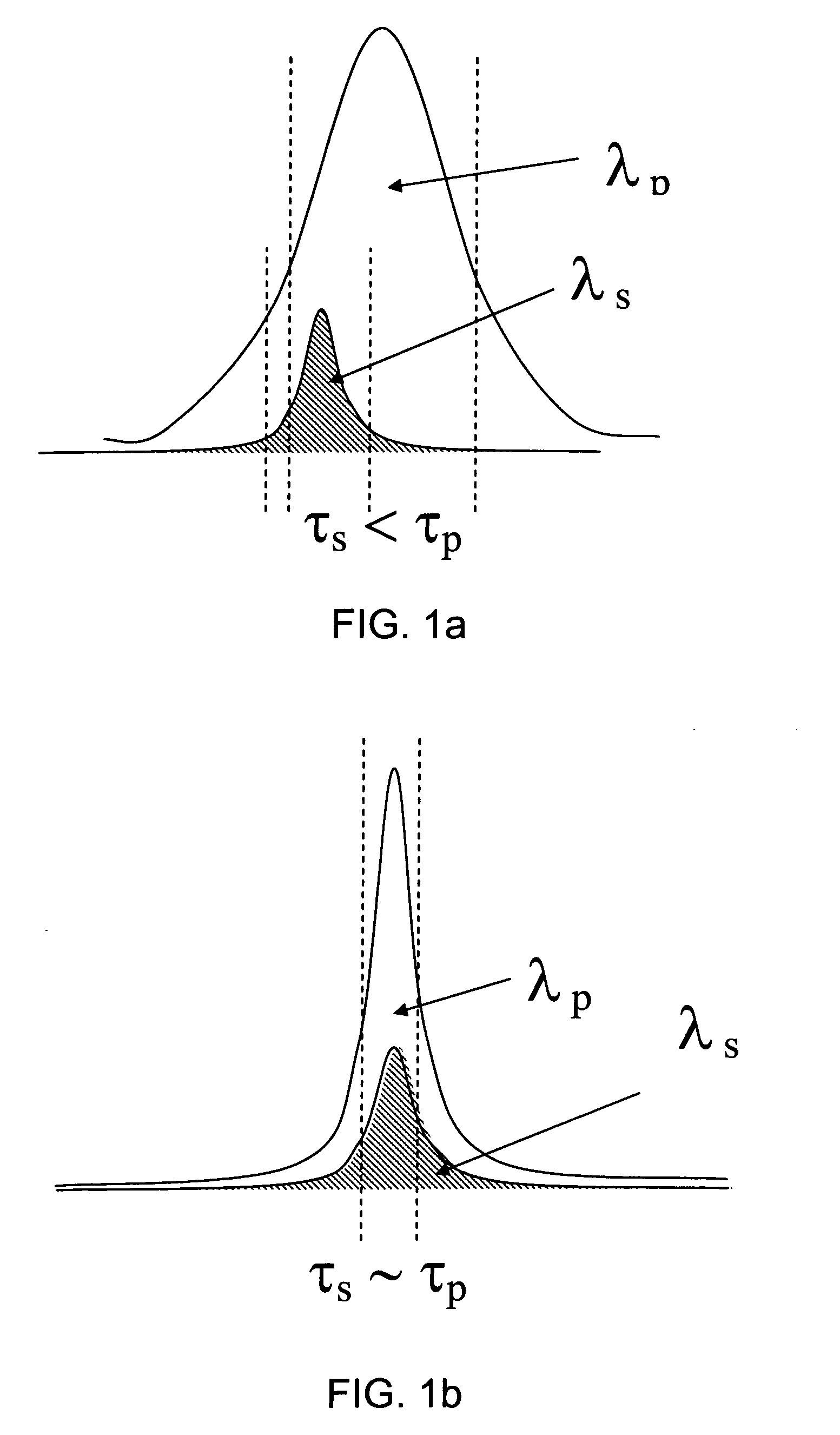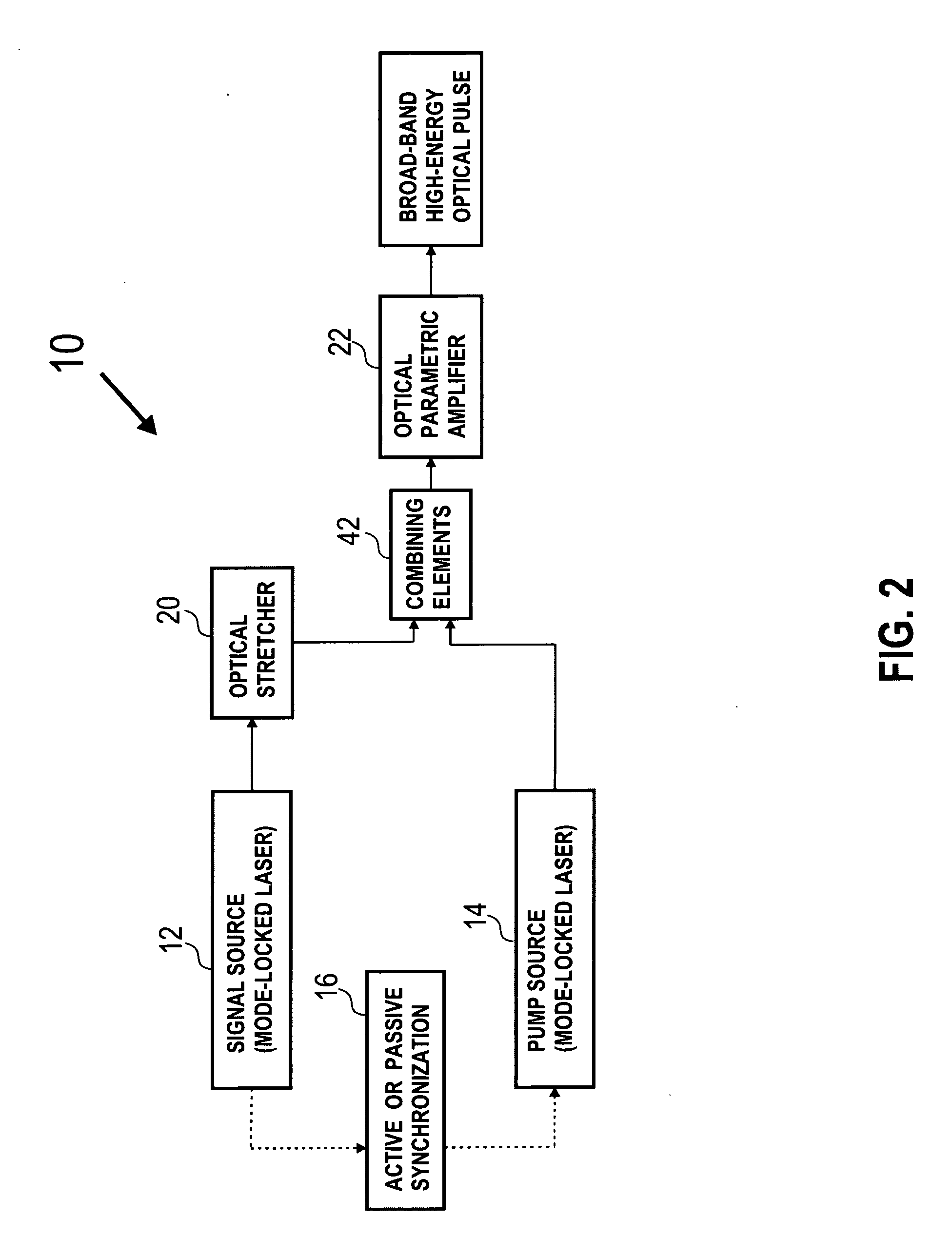Method and apparatus for high power optical amplification in the infrared wavelength range (0.7-20 mum)
a high-power, infrared technology, applied in optics, laser details, instruments, etc., can solve the problems of insufficient power generation potential, reaching the limits of cpa technique, and becoming increasingly clear
- Summary
- Abstract
- Description
- Claims
- Application Information
AI Technical Summary
Benefits of technology
Problems solved by technology
Method used
Image
Examples
Embodiment Construction
Definitions
[0051] A mode-locked laser is a laser that functions by modulating the energy content of each laser resonator's mode internally to give rise selectively to energy bursts of high peak power and short duration in the sub-nanosecond domain.
[0052] When we refer at least two mode locked lasers being synchronized this means they are synchronized to each other such that a time delay between arrival of the first stretched seed laser pulse and said pump laser pulse at the nonlinear optical medium fluctuates in time by an amount shorter than pulse durations of the stretched seed laser pulse and said pump laser pulse to give substantially temporally and spatially overlapped stretched seed laser pulse and pump laser pulses in the nonlinear gain media.
[0053] By timing jitter we mean random variation in the timing of arrival of laser pulses at a certain point relative to a specified clock. In the present application the clock is defined by a pulse train of a signal mode-locked lase...
PUM
 Login to View More
Login to View More Abstract
Description
Claims
Application Information
 Login to View More
Login to View More - R&D
- Intellectual Property
- Life Sciences
- Materials
- Tech Scout
- Unparalleled Data Quality
- Higher Quality Content
- 60% Fewer Hallucinations
Browse by: Latest US Patents, China's latest patents, Technical Efficacy Thesaurus, Application Domain, Technology Topic, Popular Technical Reports.
© 2025 PatSnap. All rights reserved.Legal|Privacy policy|Modern Slavery Act Transparency Statement|Sitemap|About US| Contact US: help@patsnap.com



